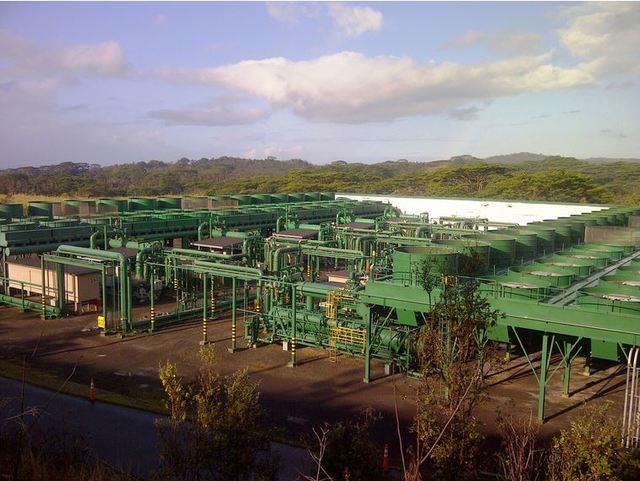KAILUA-KONA — Hawaii Electric Light Co. does not expect a shortfall in power generation despite an emergency shutdown of a Puna geothermal power plant.
The company said in a medial release that Puna Geothermal Venture, which can generate up to 38 megawatts of power, was shut down in the wake of an eruption on Mohala Street in Leilani Estates.
The plant is just under three quarters of a mile from the northern end of that street.
Despite the shutdown, a HELCO media release said the company expects sufficient power.
Utility personnel, meanwhile, were on the scene Friday evening after crews were deployed to disconnect power in areas affected by the lava flow.
Although areas near Mohala Street were without power as a result of the flow, crews were working to reroute power to keep power up for parts of Leilani Estates not affected by the lava.
“We will continue to work closely with Civil Defense to monitor and assess the situation,” said HELCO spokeswoman Rhea Lee-Moku in a release. “We strongly encourage the community to be safe and heed the advice of Civil Defense and first responders.”
Those evacuating should shut off electricity at the main breaker, unplug electric equipment and appliances and call 969-6999 to request a disconnect or transfer of service.
An emergency preparedness handbook, offering information on preparing a home and family for emergencies, can be found at www.hawaiielectriclight.com.
It is available in English, Cantonese, Ilocano, Korean and Vietnamese.
New developments from the company will be posted to the company’s website, Facebook page and Twitter page.




The importance of geothermal power in our long-term sustainability of living on this remote island, with expensive fuel in-shipping as the major alternative for electrical generation at levels that can assure power supply through nights and bad weather, is highlighted by this shutdown. Not only is source redundancy (multiple thermal well sites in cases of shutdowns or failures) necessary for this resource to be relied upon, but this alternate site MUST be located far, far away from active rift zones.
Yes, it’s much cheaper to drill and make thermal wells right over the hottest lowland spots on the entire island. And we’ve all learned a lot about the dangers and risks of doing so now, haven’t we? It was good enough to learn from, but now it’s time to press ahead with diversifying our power source to thermal wells on the OTHER side of the island, where at least half of the power is being consumed anyway. Problems are: the best west side sites are on private lands, and well development – and costs to link into the island’s power “grid,” is not profitable enough based on current user rates, even though they’re high already.
Is it worth having these more difficult economics for providing west-side redundancy worth some public subsidy of well development/connection expenses? Or would we rather have more giant oil-fired generators built in West Hawaii, to provide the redundancy needed as our population grows (it’ll be DOUBLE today’s population in just 40 years). Photovoltaics will be a huge part of our energy source growth, but it will not power everything, every day, every night, every storm event.
Something to think about. Geothermal works great in other countries (and California) where it’s not set up directly over active lava rift zones….